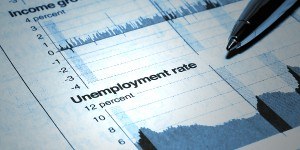
Photographer: Ian Waldie/Bloomberg
Although Australia’s QBE reported its best underwriting results in six years, Group CEO John Neal was forced to field a barrage of questions during a media briefing about why the board decided to dock his 2016 bonus by 20 percent, or A$550,000 (US$422,444).
It seems that Neal has been involved in a personal relationship with his secretary but failed to report it immediately to the board of directors, which is required by QBE’s code of conduct. (Neal is separated from his wife. His assistant has taken a role elsewhere in the company, news reports say).
“The code of conduct is very clear in the expectations it sets. The board felt I was not completely in compliance with that code of conduct and hence the decision was taken to cut an amount of my STI [short-term incentive],” explained Neal during the press conference.
The company’s 2016 annual report included this statement: “The group CEO has had a commendable year and delivered a strong full-year result for QBE. His performance is well regarded by the board. However, both parties agree some recent personal decisions by the CEO have been inconsistent with the board’s expectations. Therefore, the board has decided that his 2016 STI will be reduced by 20 percent [to A$2,210,117, or US$1.7 million].
His total remuneration for 2016, even with the reduced STI, was just over A$3 million [US$2.3 million].
Neal said the reduction in his STI has “been properly disclosed in the annual report. It’s a material amount to me. I’ve understood it. I’ve accepted it. And it was not my decision.” (It was the board’s decision).
During the media briefing, he tried to draw a line under the issue to get to questions about the company’s results, by stating early in the 19-minute meeting that “it’s a deeply private matter and I really don’t want to speak about it further.”
But the questions continued.
Some of the media tried to attach a connection between the abrupt departure on Feb. 9 of Colin Fagen, group chief operations officer, and Neal’s human resource issues.
While Neal would not discuss the reasons that Fagen left the company, he emphasized: “My personal life has remained just that and has never in any way affected any business decision or judgment that I’ve made for this company. The two matters, I can assure you, are completely and totally unrelated.”
QBE announced on Feb. 27 that Fagen is being succeeded by David McMillan, who joins QBE from Aviva plc, where he was most recently chief executive officer, Aviva Europe, and chairman of Global Health Insurance. He joined Aviva in 2002 following almost 10 years with the management consulting arm of PricewaterhouseCoopers.
Results Overview
Now for the reason the press briefing was held—as well as the more focused investor briefing on the same day—here is a brief overview of QBE’s results.
Neal reported that the company’s net profit after tax was A$844 million (US$648.3 million), up 5 percent from A$807 million (US$619.8 million) in 2015.
Gross written premium came to A$14.1 billion (US$10.8 billion) in 2016, down 5 percent from $14.8 billion (US$11.4 billion) reported in 2015, reflecting the stronger U.S. dollar (especially against sterling) and the sale of its Mortgage & Lender Services (M&LS) business in North America to National General, effective Oct. 1, 2015, according to the QBE annual report.
The company’s combined operating ratio was 94 percent, down slightly from the previous year’s reported 94.9 percent combined ratio.
“Global market conditions leave little room for error, and our underwriting discipline is evident across all of QBE’s businesses,” said Neal in a statement in the annual report.
“This is particularly the case in North American Operations, where the combined operating ratio improved to 97.7 percent from 99.8 percent in 2015, when the division produced its first underwriting profit for some years,” he added. “We are expecting further steady improvement toward a mid-90s combined operating ratio over the medium term.”
During the press conference, he said that the “business is in great shape. We feel very positive about 2017 and indeed in terms of our medium-term plans.”





















 Four P/C Insurers Are ‘AI Titans’; AI Impact Leaders Revealed: Research
Four P/C Insurers Are ‘AI Titans’; AI Impact Leaders Revealed: Research  What’s Not Changing in 2025: Homeowners Outlook, Re Retentions
What’s Not Changing in 2025: Homeowners Outlook, Re Retentions  Embroker CEO Reflects on Tech, Insurance Journey
Embroker CEO Reflects on Tech, Insurance Journey  East Coast High-End Car Theft Ring Busted
East Coast High-End Car Theft Ring Busted 





